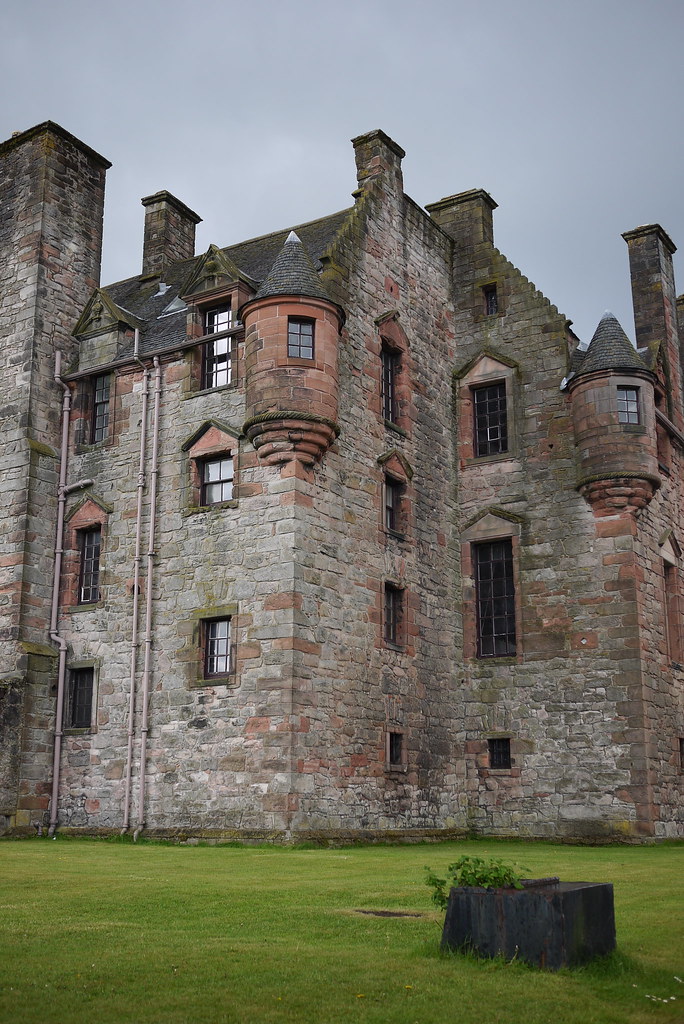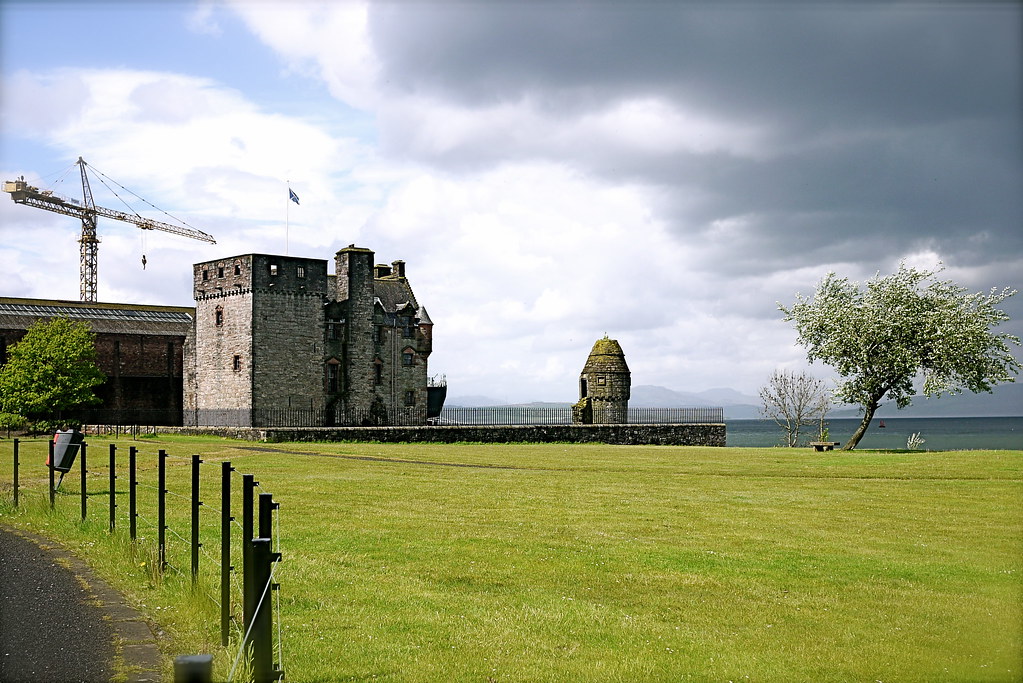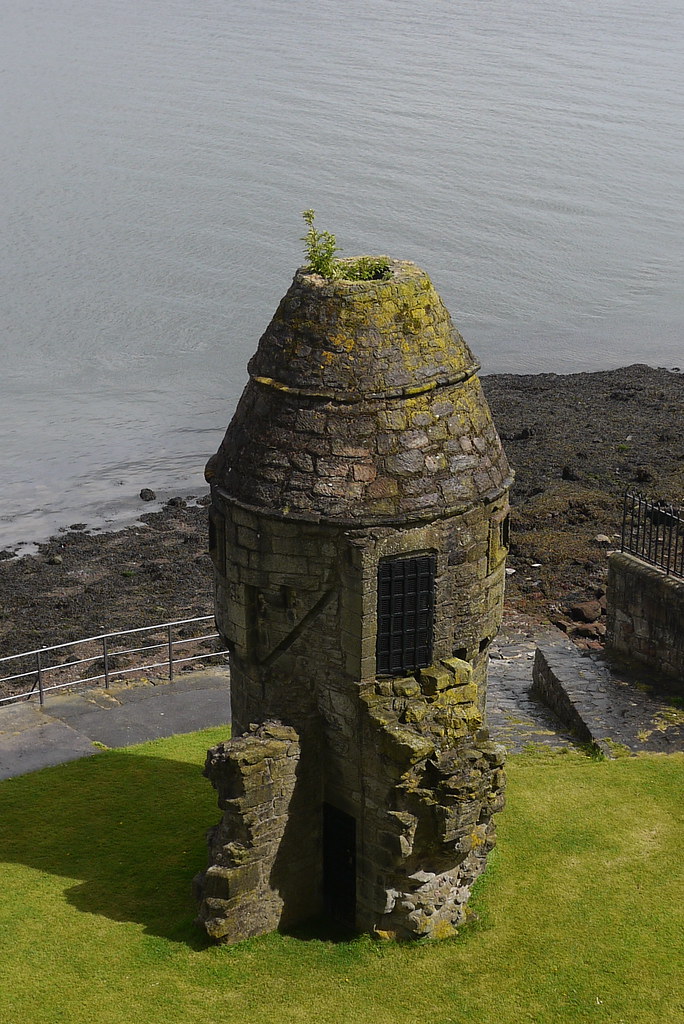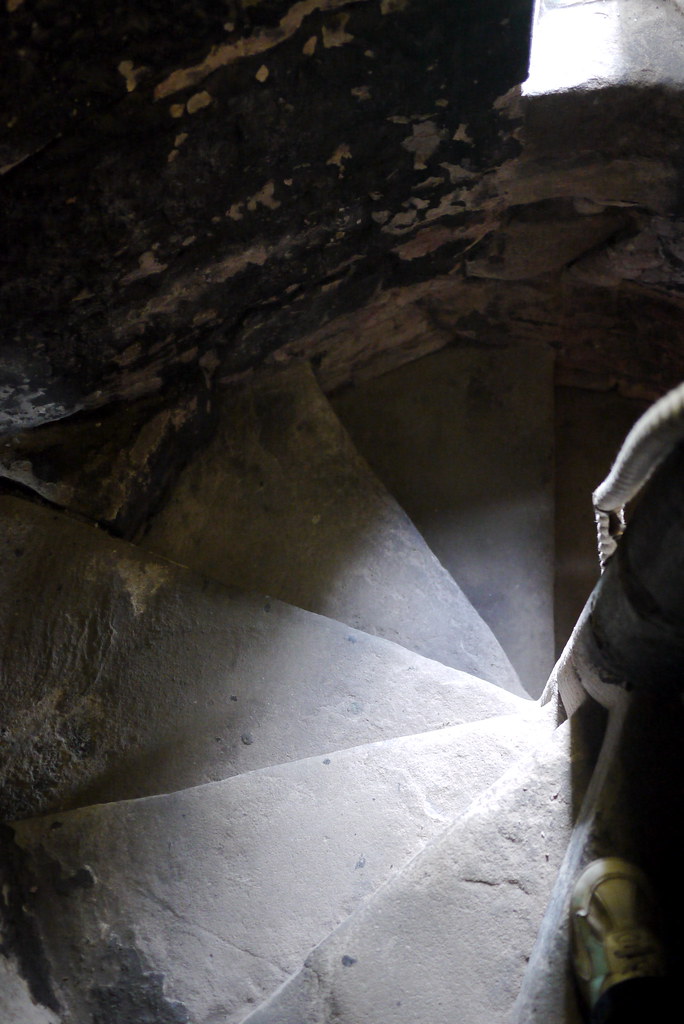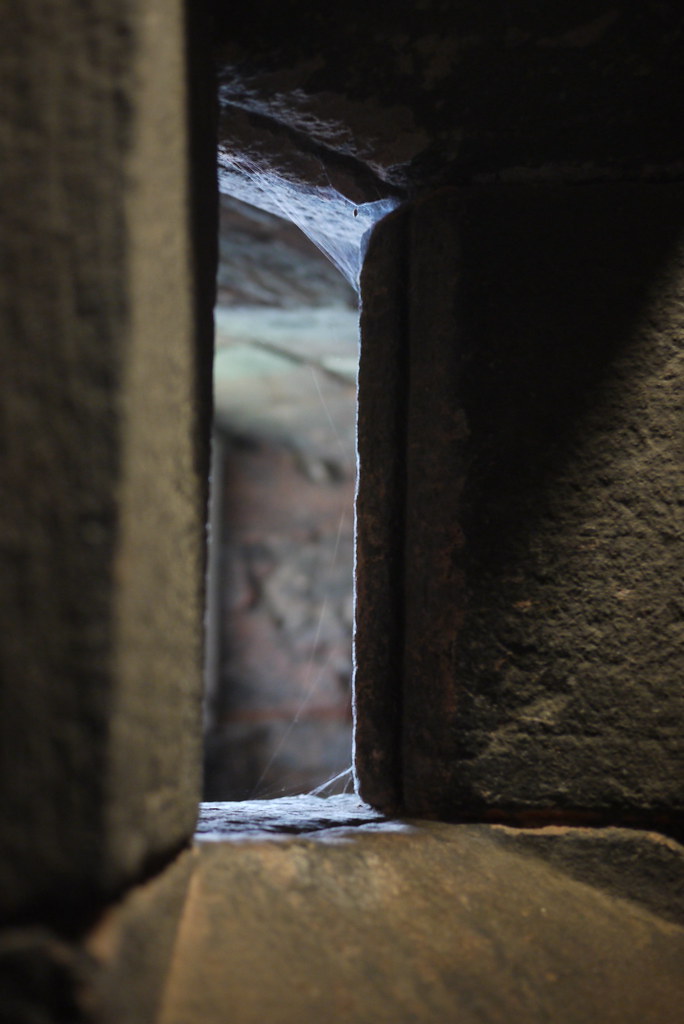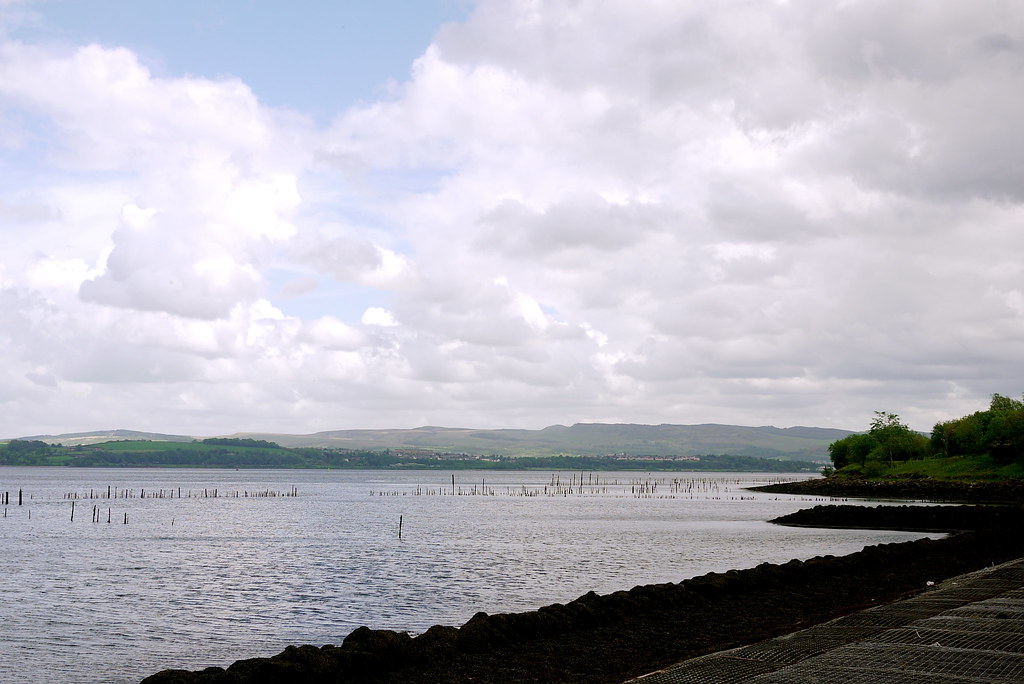Try again, shall we? Blogger ate the first attempt...
It was a busy weekend and then somelast week, with an old friend coming to stay with us for a wee holiday. Naturally, playing the goood host I had to figure out a few things that we could do that would keep us entertained, and as it happened this mostly involved me failing at public transport (although to be fair, it mostly failed me), and getting slightly tipsy in places in and around Glasgow, which was fun for us, but maybe not so fun to describe here.
One of our better successes was a trip to Newark Castle in Port Glasgow - not too much of a trek for me or my knackered back. In the three years that I've lived in this part of Scotland I've never got round to visiting it, although I've wanted to. It's a castle tucked away next to some imposing shipyards - what's left of them now - and the main road for the west coast of Scotland south of Glasgow. Blink and you'll miss it, as you drive past.
It doesn't look like much from the front at the moment, considering the fact that it's all covered in scaffolding, so here's the back view:
(And so begins my best tour guide impression). It started off life in the fifteenth century as your typical tower house, surrounded by a defensive wall with corner towers that were used as lookouts. The wall was removed in the sixteenth century by the towerhouse's most famous occupant, Patrick Maxwell. He was a nice man. Or not. When he wasn't busy soldiering, he was busy killing his neighbours, friends, being generally unpleasant, and at one point locking his wife away for six months. Even his mother complained to the authorities about him at one point (the complaint didn't get very far, though - being best mates with King James VI probably came in handy there).
Patrick's wife eventually managed to escape her lovely husband after 44 years of marriage and bearing sixteen children. She ended her days in poverty, so not exactly the happy ending but probably an improvement with how it could have ended with ole Paddy. As I said, a nice guy, Patrick. Or not.
Anyway, from this angle, you can see just how close the remaining shipyards are to the castle:
And just how marvellous the weather was that day. The odd-looking tower to the right is all that remains of the original defensive wall that surrounded the tower. Here's a better view:
Which was eventually turned into a dovecot (or doocot, as it's called in Scots). Seeing as my friend and I were the only people there at the time, the castle steward was very forthcoming about everything, and opened the doocot for us so we could take a look inside:
Normally it's locked to the public, because there's still the opening for the original toilet - that the guards would have used as they stood lookout, I guess - and there's always some clever sod who has to try it out...You can go inside on request. Although in our case, the steward was more than happy to offer. What with the weather, we were probably going to be the only visitors that morning, at least. And no wonder:
That's a view from the battlements at the top of the tower; the lumpy horizon in the photo, that meets the clouds, are the houses at the top of the hill that surrounds Port Glasgow. The black cloud moved sloooowly, but it pretty much says DOOM.
The building is remarkably well-preserved, even if there are some major works under way at the moment. There are the obligatory spiral staircases (which my friend navigated with some trepidation, she's not keen on them):
Odd nooks and crannies:
Floor supports, no longer in use:
And outside, the opportunity for some mood shots:
Where that tree is, and further up river, there used to be more shipyards that crowded around the castle - since the decline of the industry, the derelict buildings have since been removed and the area returned to grass and woodland (and road). It used to be the other way round at one point, though - at the turn of the last century, with no occupant looking after the castle it fell into disrepair and was threatened with demolition to make way for more industry. It was eventually taken into state care in 1909 and preserved.
In the old days, ships couldn't get much further up river than this, and so Port Glasgow grew up on the old lands of Newark Castle to accommodate the imports and exports to and from Glasgow - tobacco, cotton, rum, sugar. Books never really mention slaves, but I've heard rumblings locally - one of those things everybody knows, that slaves passed through here.
The shipyards were the mainstay of Port Glasgow's industry, and before the days of metal ships, there was a need for wood, of course; from the eighteenth century onwards, this was often brought up the river in specially adapted ships with hatches in the side, that could release the timber into the water when they reached their destination. The timber was then left in timber ponds near the shore, where the wood was kept in the water to season it until it was needed. What's left of the timber ponds can still be seen poking up out of the river:
Just - you'll see it better if you enlarge the photo. The ponds started to fall out of use with the advent of iron ships, and the dredging of the Clyde up to Glasgow. Once ships had direct access to the city, Port Glasgow began its inevitable decline in the industry it was famed for.
A slightly different view up river:
And you can just about see Dumbarton Rock on the opposite shore - Alt Clut, the main hillfort of the Britons of Strat Clut (Strathclyde). A little further along from the timber ponds, on the Port Glasgow side of the shore, are the remains of a couple of crannogs - probably Iron Age, but possibly early medieval, and probably related to the activity over at Dumbarton Rock. You can just about make out the outline of them at very low tide, the mounds that are the remains of the islands the crannogs were situated on.
So that's about it. My tour guiding has officially run out of steam. I think in my first entry I did for this, that got eaten, I made a little housekeeping note - I'm trying to get back into writing again, after a long hiatus thanks to the ongoing back problems I've had (am having), but in the meantime I've been on and on at my husband and resident webtroll that the Tairis website has been frustratingly slow and unstable. Magic and all sorts of web wizardry have since happened and the site is now on a brand spanking new host and server (or different ones, anyway) and so far it's been running a lot better. Hopefully it will stay that way.
